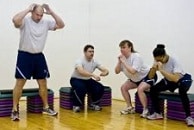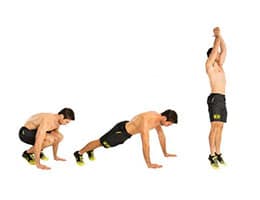 A workout is a routine of exercises or activities that serves as preparation for carrying out a job or practicing a sport . The concept comes from the French word entraîner . Functional , on the other hand, is something linked to a function or designed to meet an objective effectively.
A workout is a routine of exercises or activities that serves as preparation for carrying out a job or practicing a sport . The concept comes from the French word entraîner . Functional , on the other hand, is something linked to a function or designed to meet an objective effectively.
Functional training , in this framework, is called training that is oriented towards a specific purpose . In this way, their routines are designed to achieve the goal in question. It generally consists of multiple diverse exercises that promote comprehensive conditioning of the body, although oriented towards certain tasks.
The functional training of a tennis player, to cite one case, should be focused on strengthening the muscles and joints that are most used during tennis matches. It also aims to correct and maintain adequate body posture to gain efficiency within the framework of the activity.
It can be said that functional training involves planning to train according to individual needs and objectives. It is based on intense and brief exercises that, on a general level, contribute to increasing muscle mass, burning fat and improving balance, mobility and flexibility.
A functional training session usually does not last more than thirty minutes. Machines are not used and the whole body is involved so that the results are comprehensive.
The greater risk of suffering injuries by involving many parts of the body and the slowness to achieve general muscle strengthening by not limiting it to a single area are two of the disadvantages of functional training that some physical trainers mention. As points in favor, however, they highlight balanced development and its effectiveness when oriented towards specific objectives.
Unlike what happens during machine training, functional training offers us a greater degree of activity and its movements are more complex. This means that if done properly, it offers greater wear and tear than traditional means, which results in more satisfactory results for those seeking to burn calories through physical exercise.
 For muscle growth , functional training is also better than conventional training, and this is because it offers us more natural movements and more intense routines, unlike the rigidity of the movements that we can do with gym machines. .
For muscle growth , functional training is also better than conventional training, and this is because it offers us more natural movements and more intense routines, unlike the rigidity of the movements that we can do with gym machines. .
As mentioned above, functional training also has disadvantages. To avoid potential injuries, it is very important that we know how to control each of the movements, and to do so we must learn the routines thoroughly. In traditional training it is not necessary to pay as much attention to this point, since the machines guide us and the risk of injury is considerably lower.
We can all start enjoying the advantages of functional training in our homes, without having to buy any equipment . To do this, we must learn some exercises depending on the objectives we want to achieve, such as the parts of the body we want to strengthen. In a circuit of this type, we usually seek to reduce rest to a minimum: we must try to perform the exercises with as few pauses as possible.
One of the typical exercises in a functional training circuit are burpees , which consist of lying face down on the floor until touching it with the chest and then rising, generating an impulse with the arms to move to the typical squat position (with the legs bent) and jump, extending the entire body upwards until we clap our heads while we are suspended. At first, it is enough to do twelve repetitions of burpees per day.
